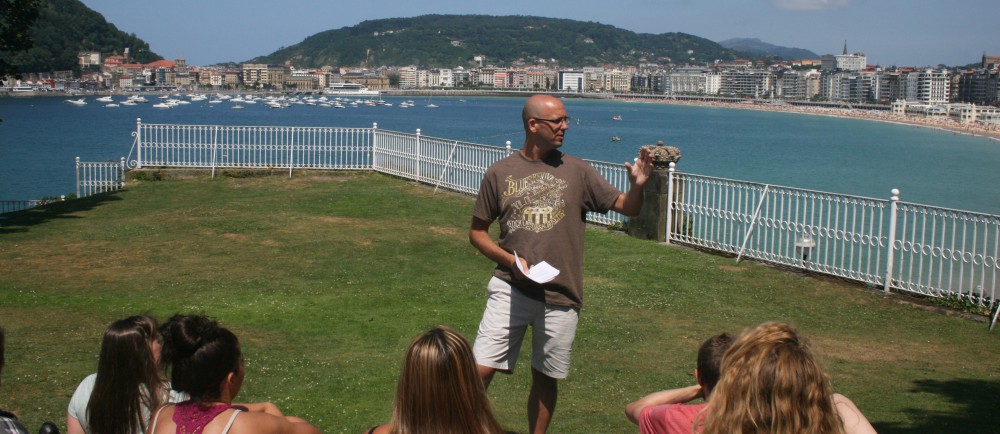According to Maritxu, our sweet, 73 year old host mother, we are guapas, guapissimas – beautiful, gorgeous girls. She pats us on the shoulders and kisses us on the cheeks, serves us delicious meals, and makes sure that we’re enjoying ourselves here. She speaks only Spanish and Basque, but between the three of us staying here we can usually muddle through a conversation. As Maritxu often says, “Muy bien, muy bien” – which is exactly how each day has been going.
Walking out of our perfectly located apartment in the Parte Vieja, you are immediately in the midst of all that San Sebastian has to offer. We’re a few minutes from the beach and a few steps away from the bars. Through our windows, you can hear musicians playing on the street: an odd blend of jazz standards, house music, and carefree improvisation on the guitar. Your feet may slip a little on the slick stone of the plaza, and you may have a little trouble finding enough sand to lay down a towel at La Concha, but I’m pretty sure that’s the worst of the city – which is to say, the city has very little to complain about.
I’ll be honest – learning Spanish is daunting. Basque is even more so. Neither quite roll of the tongue with the ease that American English has for me. The Castilian accent makes it all the more challenging. But despite the challenge of it all, it’s proven worthwhile when I see progress – and I’ve only been here three days now! The bit of concentration it took me to learn to pronounce eskerrik asko was worth the smiles and laughs it brought out from my host family.
Getting over the nervousness of trying to use a new language has been imperative. I’ve realized that trying is the operative word – and that everyone is willing, if not enthusiastic about helping me as well. I’ve started taking everything in stride, and count every awkward interaction as a learning experience.
Beyond the beauty of the people and the city, it was incredible to see some of the history as well. Back home, a building has considerable historic value if it has remained standing for more than a century. The San Telmo Museum’s building has been around since the 1500’s, and many of the artifacts within the museum date back considerably further. It’s simply mind blowing to follow the evolution of the Basque people, all the way up to the present day. I find that learning about the past and history of a culture adds significant value to the understanding of the current culture – and I think seeing so much of the Basque culture’s origins will help me to contextualize the rest of my experiences here in Donostia.
It really is bizarre, that after only a few days, I have come to see the city as a home. I’ve already made friends that are always willing to meet up and go on an adventure. I’ve got a delicious dinner waiting for me every night, and I have a bed to collapse into at the end of the day. Whenever Maritxu asks, “¿Qué tal?”, I always say “Muy bien” – and I always mean it.
